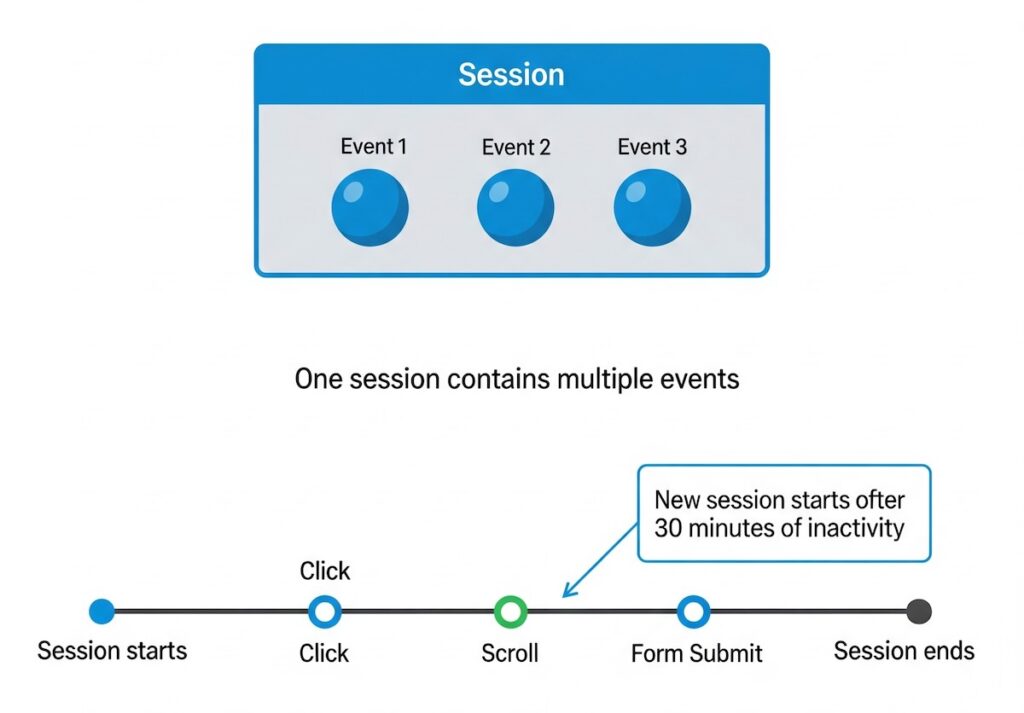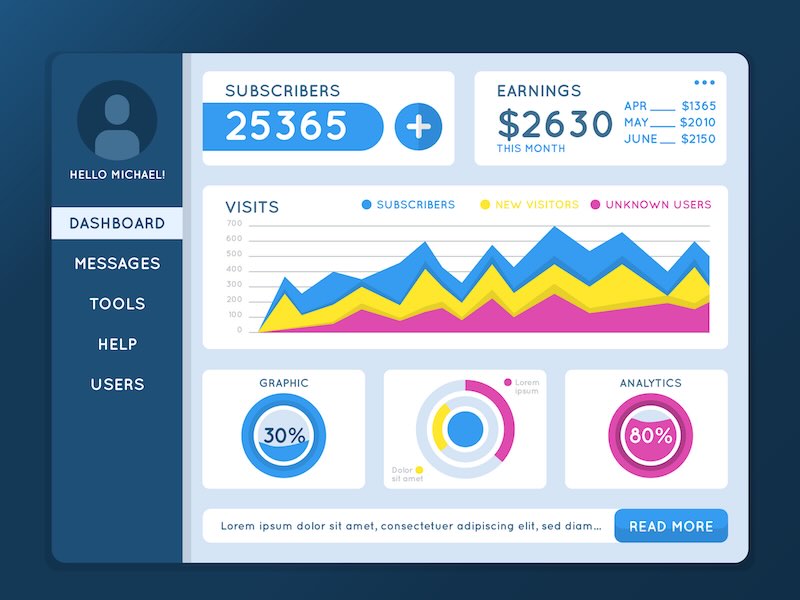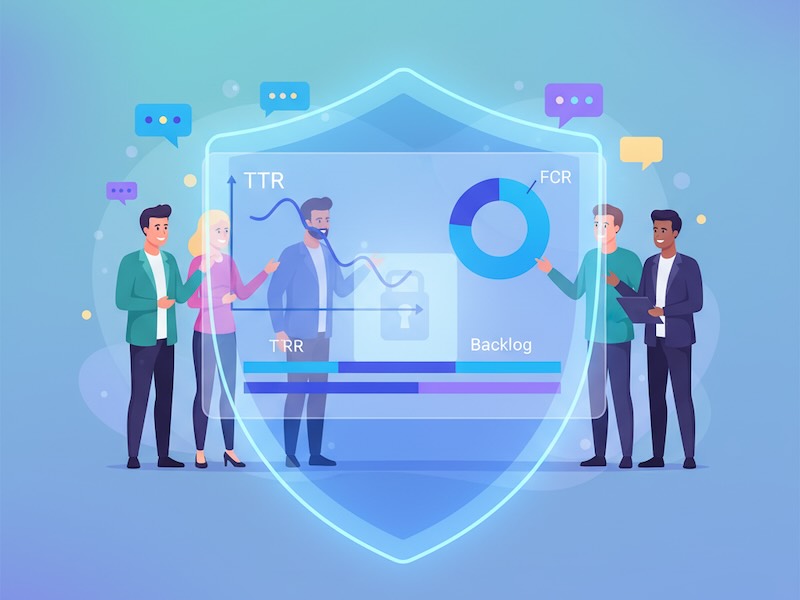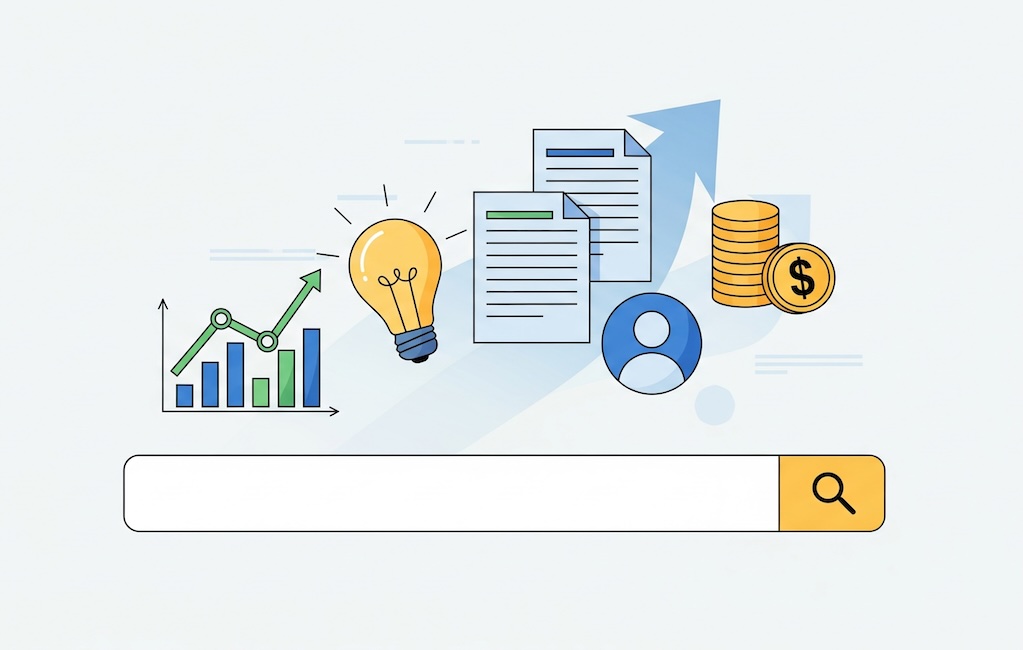Ever had that moment when a client asks, “So… what’s the difference between an event and a session?” and you freeze for a second? I’ve been there. I’ve seen senior marketers, web analysts, even “Google Analytics certified” folks stumble on this one. Not because they’re clueless, but because in our industry these terms get thrown around like stickers at a tech conference. Let’s break it down so you can explain it without sounding like you’re reciting a manual.
Understanding the Basics
What Is an Event?
An event is a single user action. One click. One scroll. One form submit. It’s logged right at the moment it happens, no matter how much time has passed before or after.
Example: the first time I set up GA4 event tracking for an “Add to Cart” button, the store owner’s jaw dropped. People were clicking it twice as often as they actually checked out. Events are raw truth.
Examples of events:
- Clicking the “Buy Now” button
- Filling out a form
- Watching a video
- Downloading a PDF
What Is a Session?
A session is the entire period when a user is interacting with your site or app. It can include multiple events.
Analogy: an event is a single note, a session is the full song.
Typical session behavior:
- Starts when the user lands on your site.
- Ends after 30 minutes of inactivity or when the browser closes.
- Can contain 1, 5, or even 100 events.
Key Differences Between Events and Sessions
| Criterion | Event | Session |
|---|---|---|
| What it is | A single user action | A period of user interaction |
| Focus | Action-based | Time-based |
| Count in a report | Can be hundreds in one session | Usually 1 per visit |
| Example | Click on a button | 20 minutes browsing with multiple clicks/scrolls |
Time-Based vs Action-Based Tracking
- Events are independent of time — they’re recorded when they happen.
- Sessions have a timer — 30 minutes of silence, and it’s a new one.
Twitch analogy:
- Events are every single chat message.
- Sessions are the entire livestream.
Why the Distinction Matters in Web Analytics
Measuring User Engagement Correctly
If you mix these up, you can end up celebrating for no reason.
Classic mistake:
- You see a spike in events.
- You think traffic exploded.
- Turns out you just added a new click tracking script.
Avoiding Common Misinterpretations
- Look at both: events for details, sessions for the big picture.
- Watch for tracking changes: more events doesn’t always mean more users.
- Context is king: 1 event in 1 session vs. 50 events in 1 session — completely different stories.
Building a Clear Mental Model
Think of it like this:
- The box is the session.
- The marbles inside are the events.
- Each marble is logged the moment it’s added.
- Close the box (30 minutes of inactivity) — the next one is a brand-new box.

Practical Applications and Use Cases
When to focus on events:
- Funnel analysis
- Measuring element click-through rates
- Tracking micro-interactions (like file downloads)
When to focus on sessions:
- Overall traffic measurement
- Calculating new vs returning users
- Analyzing traffic sources
Event vs Session: Real-World Strategy
| Goal | Priority Metric |
|---|---|
| Campaign performance analysis | Session |
| UX and usability testing | Event |
| Engagement monitoring | Both |
Conclusion and Best Practices
- Sessions answer when and who.
- Events answer what exactly the user did.
- Never assume more events = more traffic.
- As we say in the trenches: “If you torture the data long enough, it will confess to anything.” Your job? Get the truth without the torture.




